There's nothing quite as frustrating as expecting warmth and feeling cold air. If your furnace blowing cold air has you shivering, you're not alone. This common problem can turn a cozy home into an icebox fast.
Why is your furnace blowing cold air?Here are the most common reasons:
But don't despair. While feeling cold air from your furnace can be alarming, many issues have straightforward solutions. Some you can even fix yourself. Others signal it's time to call a professional.
This guide will walk you through the potential causes. You'll learn what to check and when to seek expert help. Our goal is to get your home warm and comfortable again.
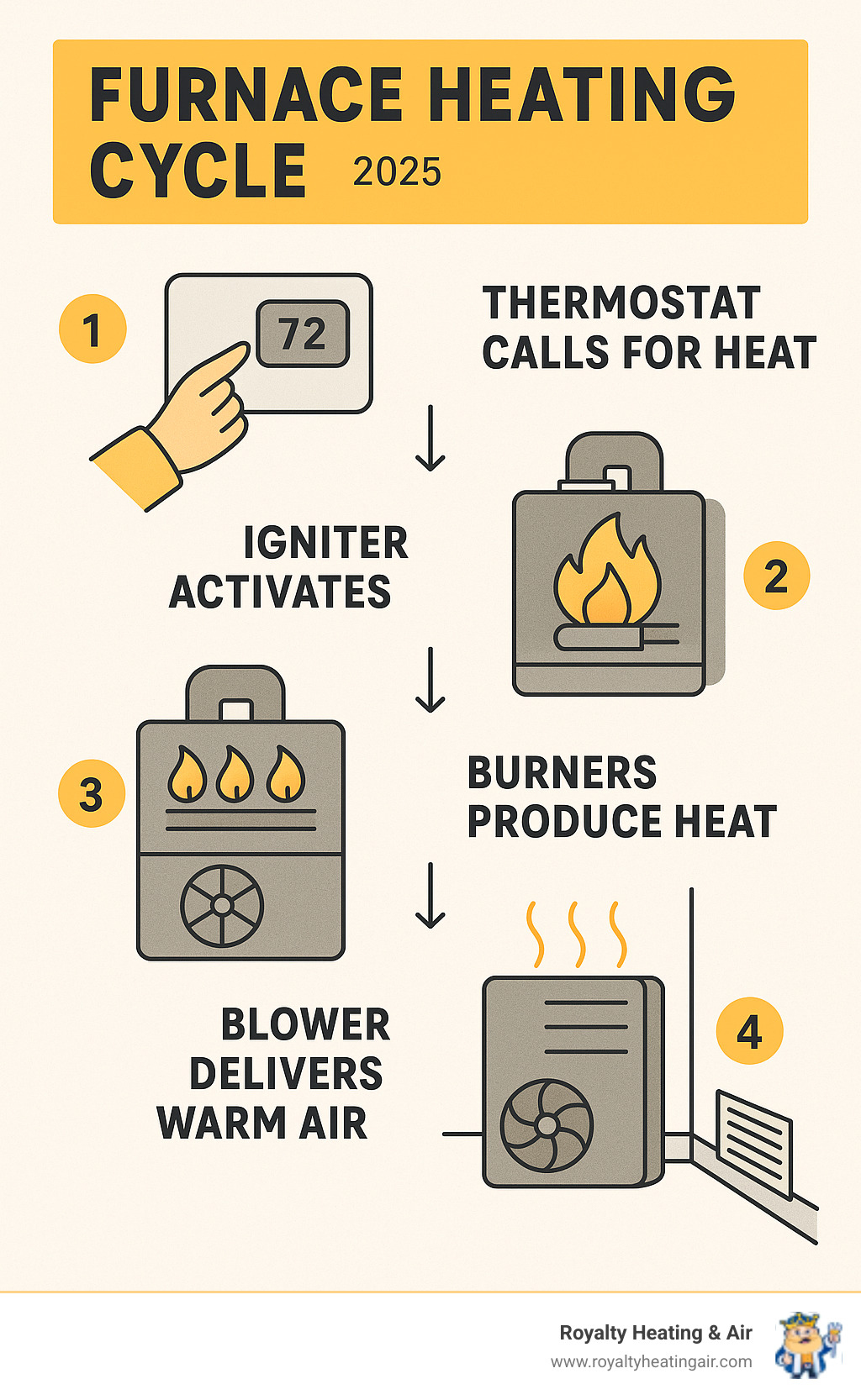
When your furnace starts blowing cold air, don't panic. Before calling for service, there are several simple checks you can perform. These quick troubleshooting steps often resolve the issue, saving you time and money.
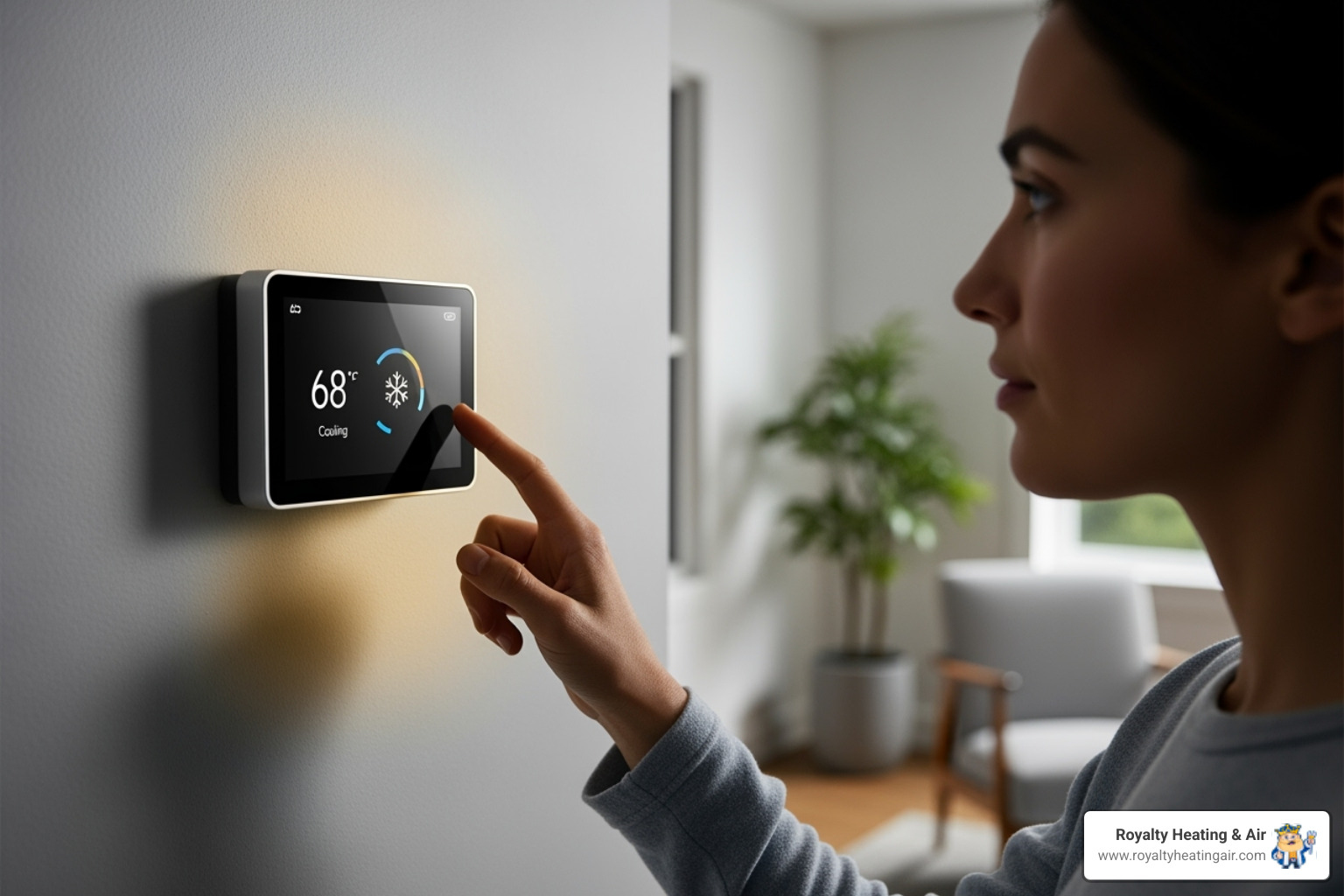
The thermostat is a frequent culprit when a furnace blows cold air. It's easy for settings to get accidentally changed. Here’s what to check:
A dirty air filter is one of the most common reasons for a furnace blowing cold air, and it's an easy fix. A clogged filter restricts airflow, forcing your furnace to work harder. This can cause the heat exchanger to overheat. As a safety measure, a limit switch will shut down the burners to prevent damage or a fire hazard. The fan may continue to run to cool the unit, circulating unheated air. This process, known as "short cycling," is inefficient and prevents your home from warming up.
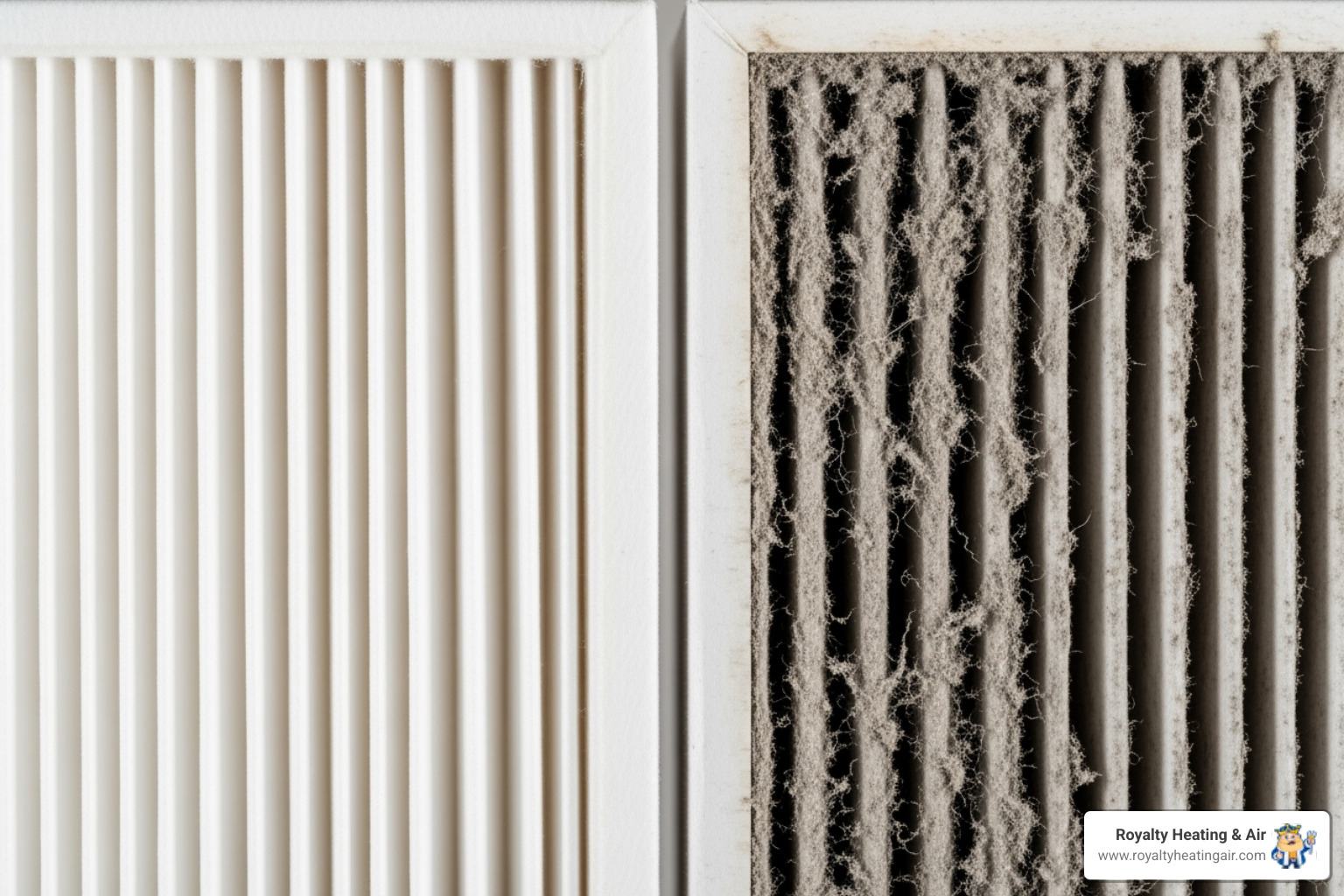
Relevant Statistics and Best Practices:
Common Air Filter Types:
Changing your filter is a simple DIY task. Just make sure to turn off your furnace before you do it!
If the simple fixes didn't work, the problem might be with your furnace's ignition system or safety features. Let's look at a few more common culprits to help you decide if it's a DIY job or time to call an expert.
How your furnace lights its gas depends on its age. Older furnaces use a constant flame, while newer ones spark up on demand. This difference is key to troubleshooting.
Pilot Light Furnaces (typically pre-1990s):
Older furnaces use a pilot light, a small, continuous flame that ignites the main burners. If this flame goes out, the furnace will only blow cold air. You can often relight it by following your furnace manual's instructions. If the pilot light won't stay lit, it could be a faulty thermocouple, a safety sensor that detects the flame. Replacing a thermocouple is a job for a professional.
Electronic Ignition Furnaces (modern furnaces, post-1990s):
Modern furnaces use an electronic ignition system that sparks or heats up on demand. It's more energy-efficient, but if the igniter is cracked or worn out, it can't light the gas. You'll hear the fan, but the burners won't ignite. Replacing a faulty igniter is best left to a professional.
Here's a quick side-by-side to help you figure out what kind of system you have:
| Feature | Pilot Light Furnaces (Older) | Electronic Ignition Furnaces (Modern) |
|---|---|---|
| Typical Age | Pre-1990s | Post-1990s, especially post-2010 |
| Ignition Method | Small, continuous flame | Hot surface igniter or intermittent pilot |
| Common Cold Air Issue | Pilot light out, faulty thermocouple | Faulty igniter, control board issues |
| DIY Fix Potential | Relighting pilot light | Limited; often requires professional replacement |
| Safety Sensor | Thermocouple | Flame sensor |
Sometimes a furnace lights up, then quickly shuts down again, leaving you with furnace blowing cold air. This is often caused by a dirty flame sensor.
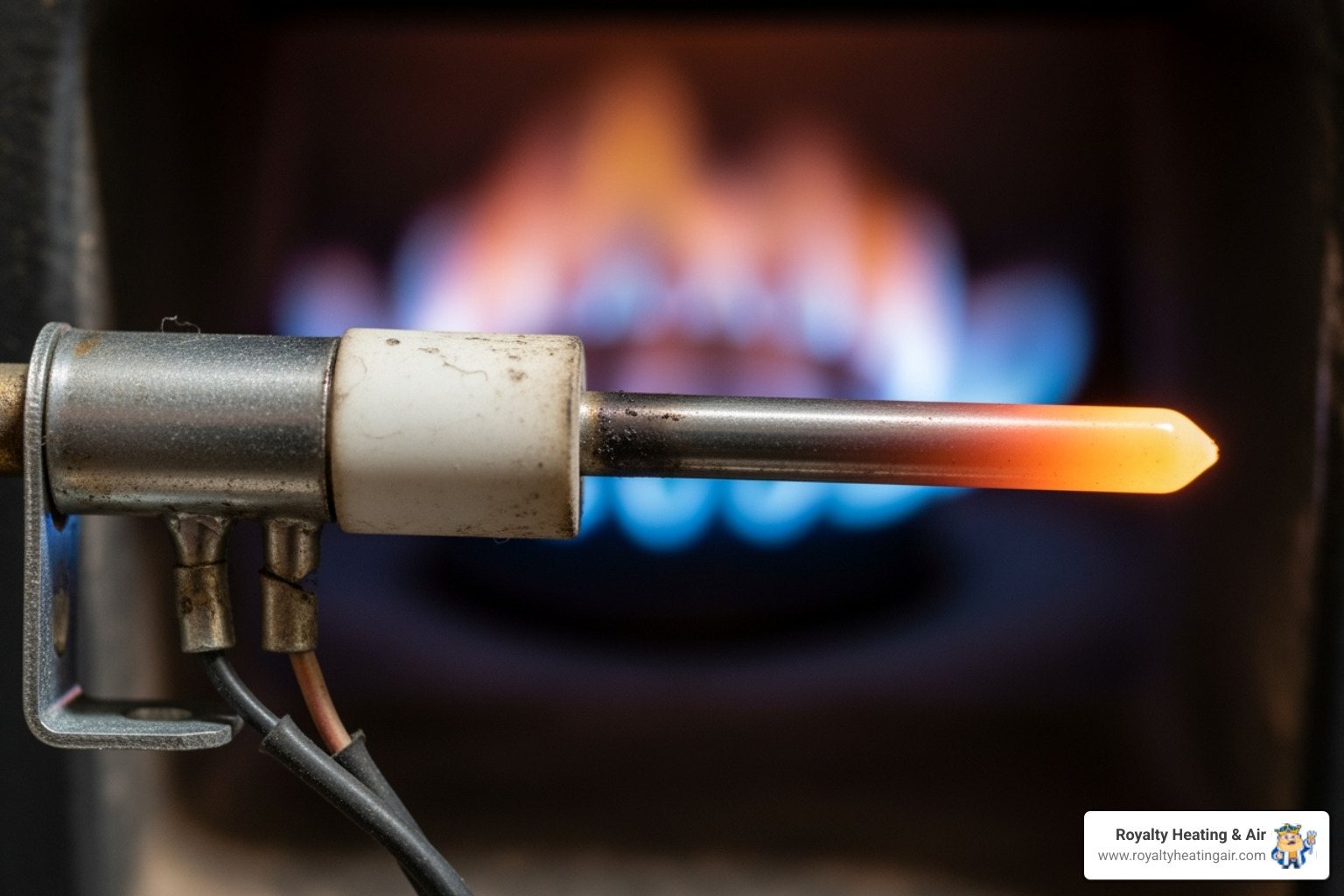
If you have a modern, high-efficiency furnace blowing cold air, the issue might be a clog. These units produce condensation (water) during operation, which drains away through a condensate line. If this line gets clogged with algae or debris, water backs up. A safety float switch detects the high water level and shuts down the furnace to prevent water damage. The fan will continue to run, blowing cold air. You may be able to clear minor clogs yourself, but for stubborn blockages, it's best to call a professional.
If your home's ductwork has leaks, the warm air your furnace produces can escape into your attic or walls before reaching your rooms. This wastes energy and can make the air from your vents feel cool. Industry experts suggest that leaky ducts can account for 20 to 30 percent of air loss, forcing your furnace to work harder and raising your energy bills. While you can seal small, accessible leaks with mastic sealant or foil-backed tape (not standard duct tape), a professional duct sealing is the best way to find and fix all leaks.
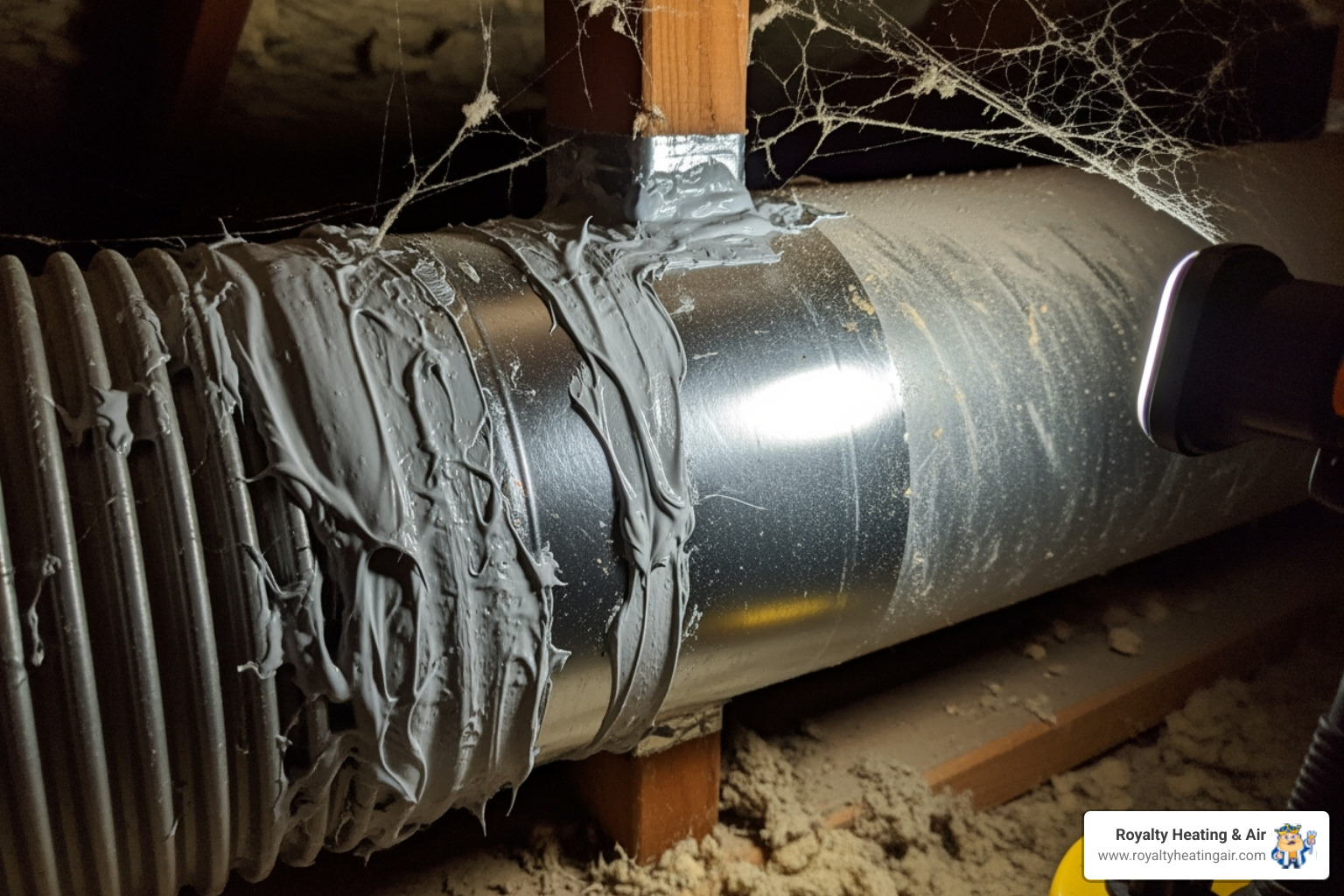
Some causes of a furnace blowing cold air are not just inconvenient—they're dangerous. Issues involving gas, complex electrical parts, or the furnace's internal structure require a professional HVAC technician. For your safety, it's crucial to know when to call for help.
This is the most critical issue that requires immediate professional attention. The heat exchanger is where combustion gases heat the air for your home; these two air streams should never mix. Over time, the metal can develop cracks, allowing deadly carbon monoxide (CO), an odorless, colorless gas, to leak into your home's air supply.
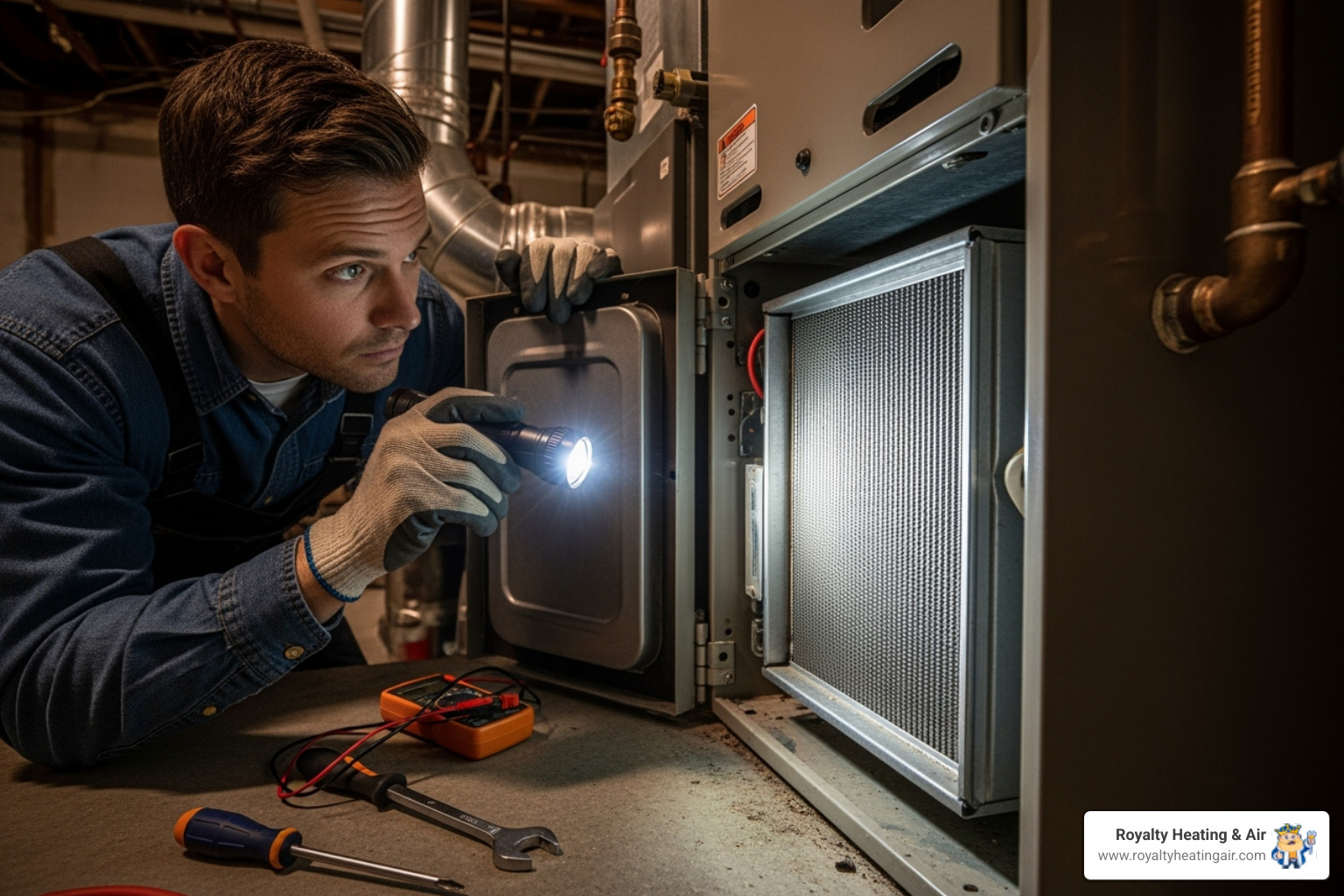
Symptoms of CO poisoning mimic the flu (headaches, nausea, dizziness) and can be fatal. A cracked heat exchanger can also trigger safety controls, shutting down the burners and leaving only the fan running.
We can't emphasize this enough: this is never a DIY fix. If you suspect a cracked heat exchanger or your CO detector alarms, evacuate your home, call 911, and then contact a trusted HVAC professional. A cracked heat exchanger almost always means the furnace must be replaced.
Beyond the heat exchanger, several other complex problems require professional help:
When these more serious issues pop up, it's definitely time to pick up the phone and contact us at Royalty Heating & Air. Our certified HVAC technicians have the expertise, training, and specialized tools to safely diagnose and repair even the most complex furnace problems.
We understand you have questions when your furnace isn't doing its job. Here are some of the most common questions we hear regarding a furnace blowing cold air.
It's normal for a furnace to blow cool air for a minute or two as the heat exchanger warms up. However, if it continues blowing cool air for more than a few minutes or never produces warm air, there is likely a problem that needs to be addressed.
Absolutely, in some cases. Simple issues like incorrect thermostat settings, a dirty air filter, a tripped circuit breaker, or even relighting a pilot light (on older models) are often easy DIY fixes. However, for your safety, any problems involving gas lines, electrical components, or a suspected cracked heat exchanger require a certified professional. When in doubt, always call a pro.
The cost varies widely based on the problem. A new air filter or thermostat batteries are very inexpensive. A professional repair for a faulty flame sensor or control board will cost more, involving parts and labor. Major component replacements, like a blower motor or a cracked heat exchanger (which often requires a new furnace), are the most significant expenses. The best way to avoid costly repairs is with regular furnace maintenance, which can catch small issues before they become big problems.
When your furnace blowing cold air disrupts your comfort, it's time to act. We've covered simple DIY fixes like checking the thermostat and air filter, as well as serious issues like a cracked heat exchanger that require a pro.
Safety always comes first. Never attempt repairs involving gas lines or complex electrical work. Your family's wellbeing is paramount.
The best way to avoid unexpected breakdowns is with regular maintenance. An annual tune-up can catch small problems early, improve efficiency, and extend the life of your furnace, which is typically around 15 years.
At Royalty Heating & Air, we understand how frustrating a cold furnace can be. Our certified technicians help families throughout Roseville, Loomis, Rocklin, Lincoln, and Granite Bay stay comfortable. We're proud to be part of the community, partnering with the MackAttack Foundation to support foster babies and family adoptions.
Don't spend another night in the cold. Schedule your furnace service in Roseville, CA today, and let us restore your home's comfort and your peace of mind.
